All the bees in this group are cleptoparasitic, meaning they lay their eggs in the nests of other bees. Since they are dependent on their hosts to collect pollen, none of them have pollen carrying hairs. Most are brightly color or decorated with short, dense white hairs.
To identify an unknown bee, choose the most appropriate category below to narrow the options.
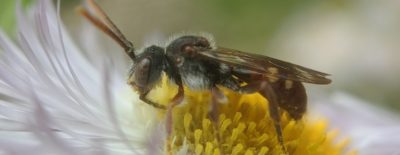
Cuckoo Nomad Bees (Nomada)
Cuckoo nomad bees are the most conspicuous of the cleptoparasitic genera. Most are active in the spring and use mining bees (Andrena) as hosts, though a few have alternative hosts. Species level identification can be very challenging as the taxonomy of this genus is poorly resolved.
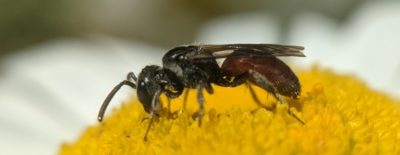
Blood Bees (Sphecodes)
The vast majority of blood bees (Sphecodes) are black with red abdomens, though males of a few species are all black. Most are cleptoparasites of Lasioglossum or other genera in the Halictidae family (ie. furrow bees and striped sweat bees). Most can't be identified from photos.
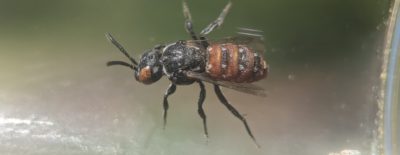
Calliopsis Cuckoo Nomad Bee (Holcopasites)
One tiny but distinctive species that is a cleptoparasite of the Eastern Calliopsis Bee. Look for both species on small flowers in disturbed areas (ball fields, town greens, etc) in June and July.
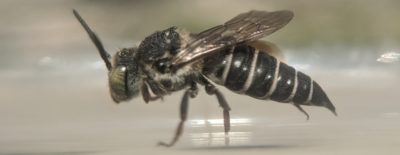
Cuckoo Leaf-cutter Bees (Coelioxys)
Cleptoparasites of leaf-cutter bees (Megachile), these distinctively shaped, medium-large bees are most common from June - September.
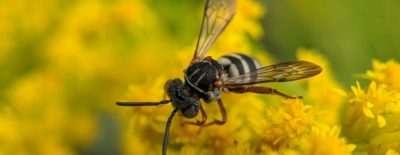
Cellophane-cuckoo Bee (Epeolus)
Cellophane-cuckoo Bee (Epeolus) are cleptoparasites of summer and fall cellophane bees (Colletes). Can be hard to distinguish from the closely related longhorn-cuckoo bees (Triepeolus).
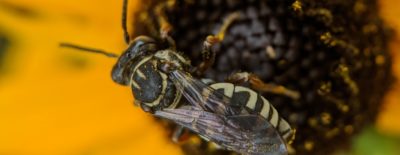
Longhorn-Cuckoo Bees (Triepeolus)
These medium-large, black-and-white bees are cleptoparasites of long-horned bees (Melissodes). Most appear to be host specific and are relatively rare.






